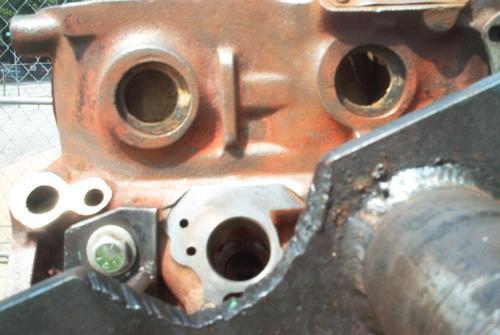The MGA With An Attitude
OVRERBORING And CORE SHIFT - PP-210
If you have in mind to overbore an engine block beyond the factory specified oversizes to increase displacement, then you need to pay attention to wall thickness in the cylinder bores. It is NOT a good idea to finish with cylinder wall thickness less than 1/8-inch (0.125"), as that could lead to cracked or distorted cylinder walls, hot running, or scuffed pistons. So before overboring you need to measure cylinder wall thickness in the engine block to determine if there is enough material all around to finish with adequate wall thickness.
The standard method for measuring cylinder wall thickness is ultra-sonic testing. If the tool is properly calibrated it can be very accurate. The primary problem with overboring and wall thickness happens if there is (was ) excessive core shift during the sand casting` If the sand core had shifted before pouring the molten cast iron, then cylinder walls may be thicker on one side of the bore and thinner on the opposite side. An easy way to make an initial quick judgment before measuring wall thickness is to look at the core plug shelves (counterbored steps) in the side of the casting with the plugs removed. If the core was excessively shifted out of position, the core holes would be visibly misaligned from the machined core plug bores. The shelf should be somewhat centered. Here is a picture of a late MGB 18V block with excessive core shift.

|
